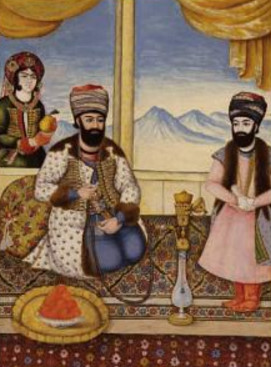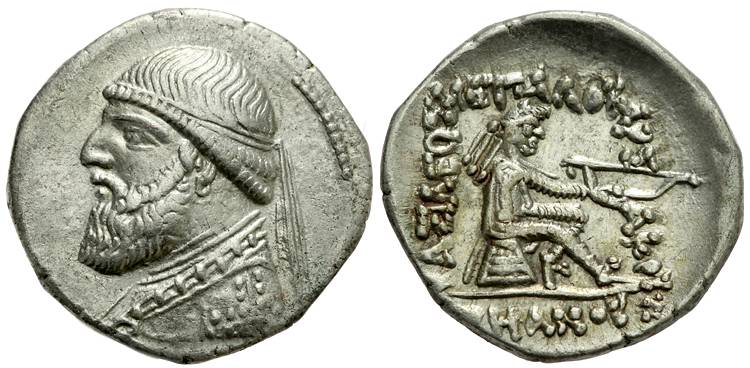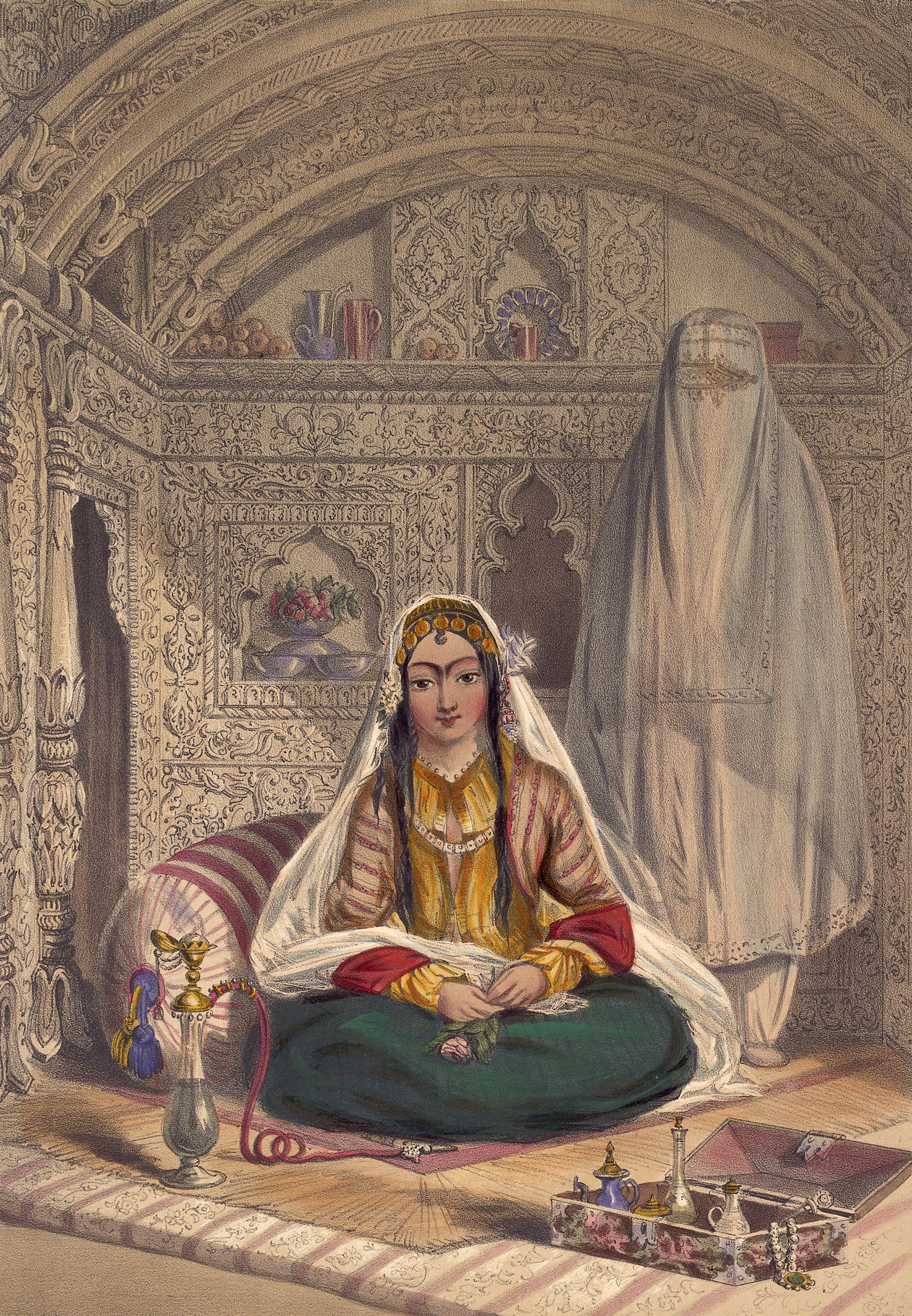|
Jafar Khan
Jafar Khan Zand, () was the sixth ''shah'' (king) of the Zand dynasty of Iran from 1785 to 1789. He was the son of Sadiq Khan Zand, who was removed from the throne in Shiraz by Ali Murad Khan, who had previously taken Isfahan for himself. Biography Early life In February 1781, the Zand prince Ali Murad Khan put Jafar Khan's father Sadiq Khan Zand and all his brothers to death when he invaded Shiraz. Jafar Khan was the only one who was spared, because he privately had reached an agreement with Ali Murad Khan. While Ali Murad Khan was in northern Iran (Mazandaran) in 1785, Jafar Khan took the opportunity to besiege Isfahan. Ali Murad Khan then marched towards the city in order to defend it, but died on 11 February at Murchakhur, a town near Isfahan. Reign Jafar Khan then crowned himself as the new Zand king in Isfahan. At the same time, the Qajar warlord Agha Mohammad Khan marched towards Isfahan. Jafar Khan then sent his men to stop his advance towards the city, but they with ... [...More Info...] [...Related Items...] OR: [Wikipedia] [Google] [Baidu] |
List Of Kings Of Persia
The monarchs of Iran ruled for over two and a half millennia, beginning as early as the 7th century BC and enduring until the 20th century AD. The earliest Iranian king is generally considered to have been either Deioces of the Median dynasty () or Cyrus the Great of the Achaemenid dynasty (550–330 BC). The last Iranian king was Mohammad Reza Pahlavi of the Pahlavi dynasty (1925–1979), which was overthrown by the Islamic Revolution. Since then, Iran has been governed as an Islamic republic. In classical antiquity, Iran reached the peak of its power and prestige under the Achaemenid Empire, which stretched from Egypt and parts of Southeast Europe in the west to the Indus Valley and parts of Central Asia in the east. By 323 BC, the Achaemenid Empire's territories had been conquered by the Macedonian Empire during the Wars of Alexander the Great, bringing Iran into the Hellenistic sphere with the Seleucid Empire (305–129 BC). However, native Iranian rule was revived wi ... [...More Info...] [...Related Items...] OR: [Wikipedia] [Google] [Baidu] |
Qajars (tribe)
The Qajars (; ) are a clan of the Bayat tribe of the Oghuz Turks who lived variously, with other tribes, in the area that is now Armenia, Azerbaijan and northwestern Iran. By the end of the Safavid era, they had split into several factions. These included the Ziyādoghlu (Ziādlu), associated with the area of Ganja and Yerevan, as well as the Qoyunlu (Qāvānlu), and Davālu (Devehlu) the latter two associated with the northern areas of contemporary Iran. Background The Qajars were one of the original Turkoman Qizilbash tribes that emerged and spread in Asia Minor around tenth and eleventh centuries. They later supplied power to the Safavids since this dynasty's earliest days. Numerous members of the Qajar tribe held prominent ranks in the Safavid state. In 1794, a Qajar chieftain, Agha Mohammed, a member of the Qoyunlu branch of the Qajars, founded the Qajar dynasty which replaced the Zand dynasty in Iran. He launched his campaign from his power base south of the Casp ... [...More Info...] [...Related Items...] OR: [Wikipedia] [Google] [Baidu] |
18th-century Births
The 18th century lasted from 1 January 1701 (represented by the Roman numerals MDCCI) to 31 December 1800 (MDCCC). During the 18th century, elements of Enlightenment thinking culminated in the Atlantic Revolutions. Revolutions began to challenge the legitimacy of monarchical and aristocratic power structures. The Industrial Revolution began mid-century, leading to radical changes in human society and the environment. The European colonization of the Americas and other parts of the world intensified and associated mass migrations of people grew in size as part of the Age of Sail. During the century, slave trading expanded across the shores of the Atlantic Ocean, while declining in Russia and China. Western historians have occasionally defined the 18th century otherwise for the purposes of their work. For example, the "short" 18th century may be defined as 1715–1789, denoting the period of time between the death of Louis XIV of France and the start of the French Revol ... [...More Info...] [...Related Items...] OR: [Wikipedia] [Google] [Baidu] |
Murdered Persian Monarchs
Murder is the unlawful killing of another human without justification or valid excuse committed with the necessary intention as defined by the law in a specific jurisdiction. ("The killing of another person without justification or excuse, especially the crime of killing a person with malice aforethought or with recklessness manifesting extreme indifference to the value of human life.") This state of mind may, depending upon the jurisdiction, distinguish murder from other forms of unlawful homicide, such as manslaughter. Manslaughter is killing committed in the absence of ''malice'',This is "malice" in a technical legal sense, not the more usual English sense denoting an emotional state. See malice (law). such as in the case of voluntary manslaughter brought about by reasonable provocation, or diminished capacity. ''Involuntary'' manslaughter, where it is recognized, is a killing that lacks all but the most attenuated guilty intent, recklessness. Most societies cons ... [...More Info...] [...Related Items...] OR: [Wikipedia] [Google] [Baidu] |
1789 Deaths
Events January–March * January – Emmanuel Joseph Sieyès publishes the pamphlet '' What Is the Third Estate?'' ('), influential on the French Revolution. * January 7 – The 1788-89 United States presidential election and House of Representatives elections are held. * January 9 – Treaty of Fort Harmar: The terms of the Treaty of Fort Stanwix (1784) and the Treaty of Fort McIntosh, between the United States Government and certain native American tribes, are reaffirmed, with some minor changes. * January 21 – The first American novel, ''The Power of Sympathy or the Triumph of Nature Founded in Truth'', is printed in Boston, Massachusetts. The anonymous author is William Hill Brown. * January 23 – Georgetown University is founded in Georgetown, Maryland (part of modern-day Washington, D.C.), as the first Roman Catholic college in the United States. * January 29 – In Vietnam, Emperor Quang Trung crushes the Chinese Qing forces in ... [...More Info...] [...Related Items...] OR: [Wikipedia] [Google] [Baidu] |
Year Of Birth Missing
A year is a unit of time based on how long it takes the Earth to orbit the Sun. In scientific use, the tropical year (approximately 365 solar days, 5 hours, 48 minutes, 45 seconds) and the sidereal year (about 20 minutes longer) are more exact. The modern calendar year, as reckoned according to the Gregorian calendar, approximates the tropical year by using a system of leap years. The term 'year' is also used to indicate other periods of roughly similar duration, such as the lunar year (a roughly 354-day cycle of twelve of the Moon's phasessee lunar calendar), as well as periods loosely associated with the calendar or astronomical year, such as the seasonal year, the fiscal year, the academic year, etc. Due to the Earth's axial tilt, the course of a year sees the passing of the seasons, marked by changes in weather, the hours of daylight, and, consequently, vegetation and soil fertility. In temperate and subpolar regions around the planet, four seasons are ... [...More Info...] [...Related Items...] OR: [Wikipedia] [Google] [Baidu] |
Zand Monarchs
Zand may refer to: * Zend, a class of exegetical commentaries on Zoroastrian scripture * Zand District, an administrative subdivision of Iran * Zand Boulevard, in Shiraz, Iran * Z And, a variable star As a tribal/clan and dynastic name * Zand tribe, a former Lak tribe of western Iran, a member of which founded the Zand dynasty * Zand dynasty (1751-1794), a dynasty that ruled southern and central Iran * Karim Khan Zand (''r.'' 1751-1779), founder of the Zand dynasty As a surname * Banafsheh Zand-Bonazzi (born 1961), Iranian writer, film producer and human rights activist * Kayvon Zand, musician and NYC nightlife personality * Lazlo Zand, fictional character from ''Robotech'' * Nathalie Zand (1883–1942), Polish Jewish neurologist * Nosson Zand Nathan Isaac Zand (born December 11, 1981), also known as Nosson Zand, is an American Chasidic rapper from Boston, Massachusetts. Biography Zand was born in Brookline, Massachusetts, on December 11, 1981. He is best known by hi ... [...More Info...] [...Related Items...] OR: [Wikipedia] [Google] [Baidu] |
List Of Persian Shahs
The monarchs of Iran ruled for over two and a half millennia, beginning as early as the 7th century BC and enduring until the 20th century AD. The earliest Iranian king is generally considered to have been either Deioces of the Median dynasty () or Cyrus the Great of the Achaemenid dynasty (550–330 BC). The last Iranian king was Mohammad Reza Pahlavi of the Pahlavi dynasty (1925–1979), which was overthrown by the Islamic Revolution. Since then, Iran has been governed as an Islamic republic#Iran, Islamic republic. In classical antiquity, Iran reached the peak of its power and prestige under the Achaemenid Empire, which stretched from Achaemenid Egypt, Egypt and parts of Southeast Europe in the west to the Achaemenid conquest of the Indus Valley, Indus Valley and parts of Central Asia in the east. By 323 BC, the Achaemenid Empire's territories had been conquered by the Macedonian Empire during the Wars of Alexander the Great, bringing Iran into the Hellenistic period, Hellenist ... [...More Info...] [...Related Items...] OR: [Wikipedia] [Google] [Baidu] |
Sayed Murad Khan
Sayed Morad Khan (Persian: سید مراد خان), was a ''Shah'' of Iran who reigned from January 23, 1789 until May 10, 1789. He was the seventh king of the Zand dynasty. His brief reign is indicative of the ruthless and brutal struggle for power that prevailed among members of the Zand family following the death of Karim Khan Zand in 1779. Life Sayed Murad Khan was a member of the court of his predecessor, Jafar Khan, in the Zand capital of Shiraz. It was apparently Jafar Khan's treatment of Sayed Murad Khan that led the latter to plot the king's overthrow. Sayed Murad Khan had been governor of Shiraz but was later confined with his family and, according to one account beaten on Jafar Khan's orders in an effort to force him to divulge his wealth.Malcolm, John, ''The History of Persia, Vol. II, Part 1'',1829 footnote, p. 106. In 1789 a group of individuals, led by Sayed Morad Khan conspired to poison Jafar Khan. A female slave was employed to carry out their wishes. Sayed Mor ... [...More Info...] [...Related Items...] OR: [Wikipedia] [Google] [Baidu] |
Hamadan
Hamadan ( ; , ) is a mountainous city in western Iran. It is located in the Central District of Hamadan County in Hamadan province, serving as the capital of the province, county, and district. As of the 2016 Iranian census, it had a population of 554,406 people in 174,731 households. Hamadan is believed to be among the oldest Iranian cities. It was referred to in classical sources as Ecbatana ( Old Persian ). It is possible that it was occupied by the Assyrians in 1100BCE; the Ancient Greek historian, Herodotus, states that it was the capital of the Medes, around 700BCE. Hamadan is situated in a green mountainous area in the foothills of the 3,574-meter Alvand Mountain, in midwestern Iran. The city is 1,850meters above sea level. It is located approximately southwest of Tehran. The old city and its historic sites attract tourists during the summer. The major sights of this city are the Ganj Nameh inscription, the Avicenna monument and the Baba Taher monument. The m ... [...More Info...] [...Related Items...] OR: [Wikipedia] [Google] [Baidu] |
Harem
A harem is a domestic space that is reserved for the women of the house in a Muslim family. A harem may house a man's wife or wives, their pre-pubescent male children, unmarried daughters, female domestic Domestic worker, servants, and other unmarried female relatives. In the past, during the history of slavery in the Muslim world, era of slavery in the Muslim world, harems also housed enslaved Concubinage in Islam, concubines. In former times, some harems were guarded by eunuchs who were allowed inside. The structure of the harem and the extent of monogamy or polygyny have varied depending on the family's personalities, socio-economic status, and local customs. Similar institutions have been common in other Mediterranean Basin, Mediterranean and Middle Eastern civilizations, especially among royal and upper-class families, and the term is sometimes used in other contexts. In traditional Persian residential architecture, the women's quarters were known as (), and in the Indian s ... [...More Info...] [...Related Items...] OR: [Wikipedia] [Google] [Baidu] |
Kashan
Kashan (; ) is a city in the Central District (Kashan County), Central District of Kashan County, in the northern part of Isfahan province, Isfahan province, Iran, serving as capital of both the county and the district. History Earliest evidence of human presence around Kashan date back to Paleolithic period that have been found at Neyasar, Kaftar Khoun and Sefid-Ab. Middle Paleolithic stone tools were discovered at travertine spring of Niasar and the travertine of Kaftar Khoun. Upper Paleolithic groups were living around Sefid-Ab spring at SW of Kashan. By some accounts, although not all, Kashan was the origin of the three wise men who followed the star that guided them to Bethlehem to witness the nativity of Jesus, as recounted in the Bible. For example, medieval traveler Friar Odoric of Pordenone related this story in 1330 after having visited there. According to a legend dating from the Safavid Iran, Safavid era, Abu Lu'lu'a, the Persian people, Persian skilled cra ... [...More Info...] [...Related Items...] OR: [Wikipedia] [Google] [Baidu] |








